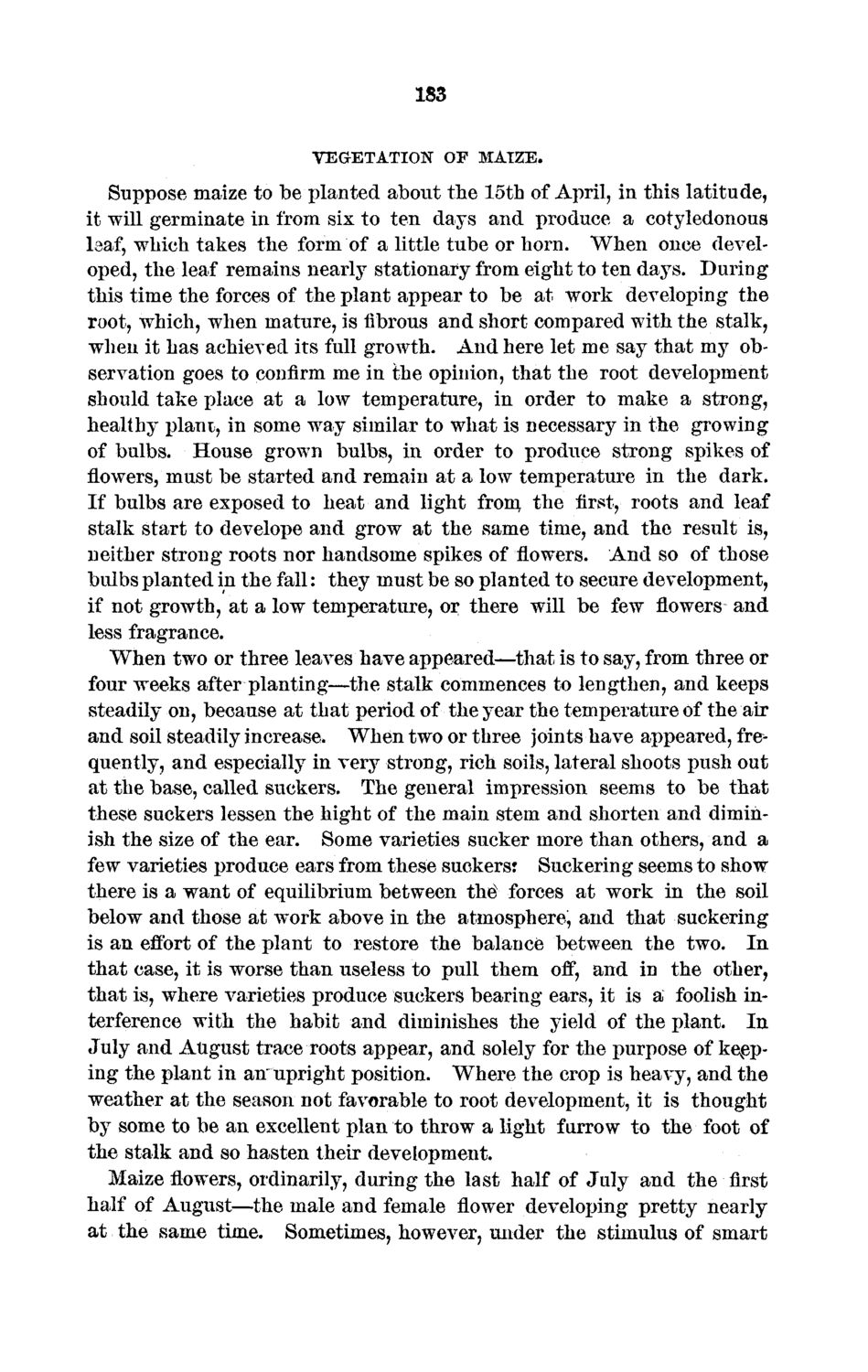| |
| |
Caption: Board of Trustees Minutes - 1872
This is a reduced-resolution page image for fast online browsing.

EXTRACTED TEXT FROM PAGE:
183 VEGETATION OF MAIZE. Suppose maize to be planted about the loth of April, in this latitude, it will germinate in from six to ten days and produce a cotyledonous leaf, wrhich takes the form of a little tube or horn. When once developed, the leaf remains nearly stationary from eight to ten days. During this time the forces of the plant appear to be at work developing the root, which, when mature, is fibrous and short compared with the stalk, when it has achieved its full growth. And here let me say that my observation goes to confirm me in the opinion, that the root development should take x>laee at a low temperature, in order to make a strong, healthy plant, in some wray similar to what is necessary in the growing of bulbs. House grown bulbs, in order to produce strong spikes of flowers, must be started and remain at a low temperature in the dark. If bulbs are exposed to heat and light from, the first, roots and leaf stalk start to develope and grow at the same time, and the result is, neither strong roots nor handsome spikes of flowers. And so of those bulbs planted in the fall: they must be so planted to secure development, if not growth, at a low temperature, or there will be few flowers and less fragrance. When two or three leaves have appeared—that is to say, from three or four weeks after planting—the stalk commences to lengthen, and keeps steadily on, because at that period of the year the temperature of the air and soil steadily increase. When two or three joints have appeared, frequently, and especially in very strong, rich soils, lateral shoots push out at the base, called suckers. The general impression seems to be that these suckers lessen the hight of the main stem and shorten and diminish the size of the ear. Some varieties sucker more than others, and a few varieties produce ears from these suckers: Suckering seems to show there is a want of equilibrium between thd forces at work in the soil below and those at work above in the atmosphere, and that suckering is an effort of the plant to restore the balance between the two. In that case, it is worse than useless to pull them off, and in the other, that is, where varieties produce suckers bearing ears, it is a foolish interference with the habit and diminishes the yield of the plant. In July and August trace roots appear, and solely for the purpose of keeping the plant in an" upright position. Where the crop is heavy, and the weather at the season not favorable to root development, it is thought by some to be an excellent plan to throw a light furrow to the foot of the stalk and so hasten their development. Maize flowers, ordinarily, during the last half of July and the first half of August—the male and female flower developing pretty nearly at the same time. Sometimes, however, under the stimulus of smart
| |